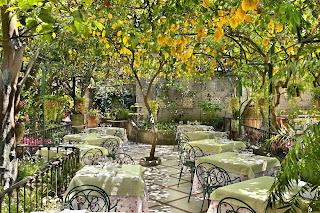.jpg) |
| The Second Temple of Nera, which is arguably the most impressive of Paestum's Greek temples |
The Doric temples at Paestum are colossal and fascinating to contemplate and, amazingly, they have survived for almost 2600 years.
On a site open to the public, it is mind-boggling for visitors to be able to stand in front of them and try to imagine how they could have been constructed without the machinery and equipment we have today.
The oldest temple, built around 550 BC by the Greeks and the furthest south on the site, was where the goddess Hera was worshipped, and it is now known as the First Temple of Hera. Next to it is the Second Temple of Hera, built around 460 to 450 BC. This was when the settlement would have been called Poseidonia.
At the northern end of the site is the Temple of Athena, which is thought to have been constructed between 510 and 500 BC and which is dedicated to the Greek goddess Athena.
 |
| The First Temple of Hera, the oldest of the three Greek temples, was built around 550 BC |
You get an idea of the scale of the temples when you see people posing against them for photographs, who appear to be insignificant and doll-like against the huge structures.
What is an archaeological treasure now was once a flourishing town. But life in Paestum was abruptly halted when it was sacked by Muslim raiders in the ninth century. Fortunately, the temples were too well built to be destroyed completely and they were rediscovered by archaeologists in the 18th century.
 |
| The Temple of Athena, which is thought to have been completed around 500 BC |
At the entrance gates to the site there is the national Museum of Paestum, where you can look at objects recovered from the site, such as pots and funerary items, and Greek and Roman paintings, including the iconic picture of the diver, a tomb decoration that will be familiar to many people because it has been widely reproduced in books. There are also shops, and a bar.
Entrance to the archaeological site costs 12 euros per adult in the summer and six euros per adult in the winter.
(Prices correct as of 10.10.24)







.jpg)


%20-%20Copy.jpg)